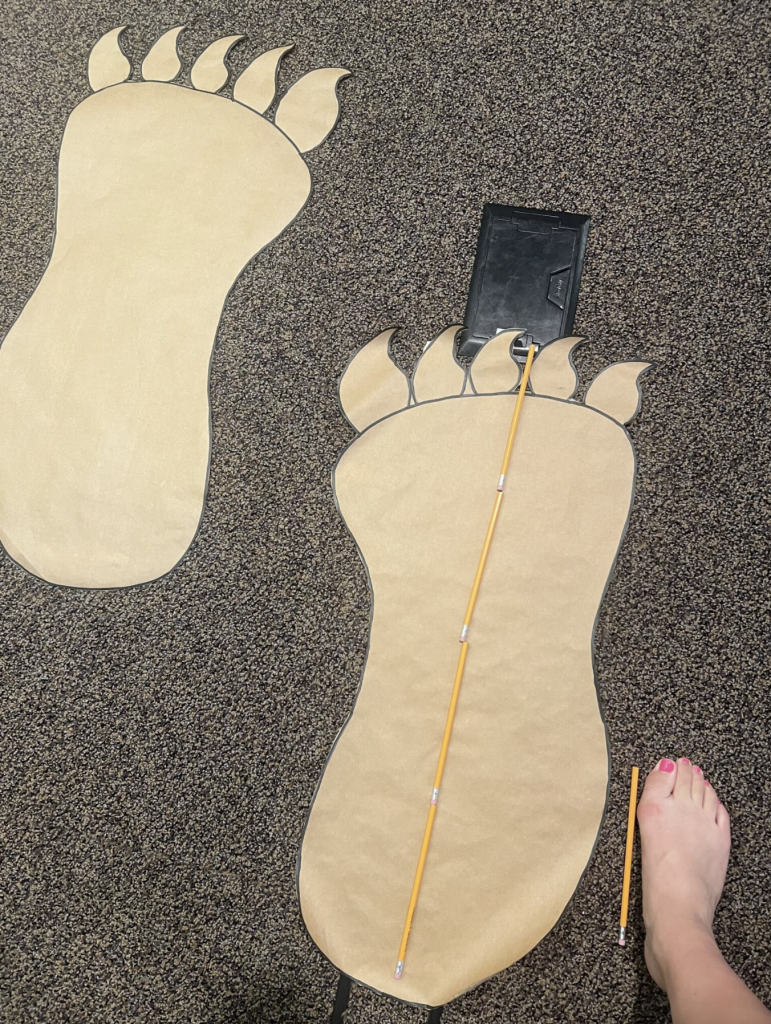Summer SAVY, Session 5 Day 1, “Encounters with Measurement” (1st-2nd)
Hello SAVY Families,
We had an amazing first day of SAVY Session Five: Encounters with Measurement. The SAVY mathematicians blew me away with their intelligence, curiosity, and dedication to the study of mathematics. We started the day by positioning ourselves as mathematicians and discussing the responsibilities that each of us would have as a member of our mathematical community. We all pledged to ask and answer questions without being afraid, to be open to new ideas, and to be respectful, kind, and safe to our peers.
To start our course content, we had to build some knowledge about the legend of the Yeti. Our course is based on measurements to learn more about this mysterious creature, and students had varying levels of knowledge about what the Yeti is. Through drawings, videos, books, and discussions, students are now able to articulate the legend of the Yeti. Our next question was: How does the legend of the Yeti relate to the study of mathematics?
To start, we practiced measuring in both metric and standard units. Our mathematicians learned the difference and the importance of using these units to measure accurately. Accuracy was a key understanding today and will remain so throughout the course. Our mathematicians practiced their measuring skills by accurately measuring items in our classroom and then checking for accuracy by comparing their measurements with those of their peers.
After understanding the concept of accuracy, we moved on to estimation. Estimation was defined as “making an educated guess at an answer.” We practiced estimating by looking at a jar with colored tiles in it. The mathematicians had to use strategies to estimate the number of tiles in the jar. Many mathematicians estimated that there were around 250 tiles, and we were shocked to find out that there were actually 400 tiles. We repeated the process by estimating the length of our classroom in feet. Once again, the mathematicians were surprised that our classroom is about 38 feet long. Finally, we went even bigger and took a field trip outside to the Wyatt Lawn. There, we discussed how we could estimate the number of blades of grass on the lawn. While the mathematicians were bummed that I did not have a measurement for this, we had a productive discussion about the steps you could take to measure a number so large. We tied this to our discussion of the importance of accuracy and learned about how both accuracy and estimation are beneficial skills for mathematicians.
To work with both estimation and accuracy, mathematicians discussed tools and strategies for measuring themselves. First, mathematicians estimated the length of each of their body parts using adding machine tape and measuring the piece of tape they ripped. Then, they found the actual measurement using tools such as the adding machine tape, multiple rulers, or their partner’s help. Finally, they found the difference between the estimation and the accurate measurement. Many mathematicians tried to tell me that their estimation and their accurate measurement were exactly the same, which led to a challenging conversation around honesty and following all directions. I was so impressed by how each of the mathematicians responded to this feedback and edited their work, this time following the set procedure. I encouraged our mathematicians to repeat this process at home with their parents or siblings to practice their measuring skills. When finished with this activity, students decided which body part measurement could be used as a benchmark for measuring other real-world objects. Ask your SAVY mathematician which body part they chose and why!
To end the day, we read an additional legend of the Yeti and identified how math and measurement play a big part in the study of this creature. Our mathematicians noted that the length of a footprint left behind by an adult Yeti was four unsharpened pencil lengths long. The mathematicians then compared the length of the Yeti footprint to the length of their own footprint. Most of our mathematicians found that their feet were about one unsharpened pencil long. This unsharpened pencil was used as another example of a measurement benchmark, because if our own feet are about one to two unsharpened pencils long, we could double our measurements to get measurements for the size of the Yeti. The SAVY mathematicians will use this benchmark to assist them with their final project on Friday. We closed our day with a closing circle, ensuring that all mathematicians made connections to class concepts, mathematical vocabulary, and one another.
Questions to ask your mathematician:
- In your own words, what is the legend of the Yeti? Why is this legend so famous?
- What is a mathematician? How do mathematicians behave and work?
- What is measurement? How do accuracy and estimation apply to measurement?
- How does the study of math relate to the study of Yeti?
I look forward to working with the mathematicians to study more about Yeti tomorrow! Have a great night!
Sincerely,
Ms. Anna Gruchot


